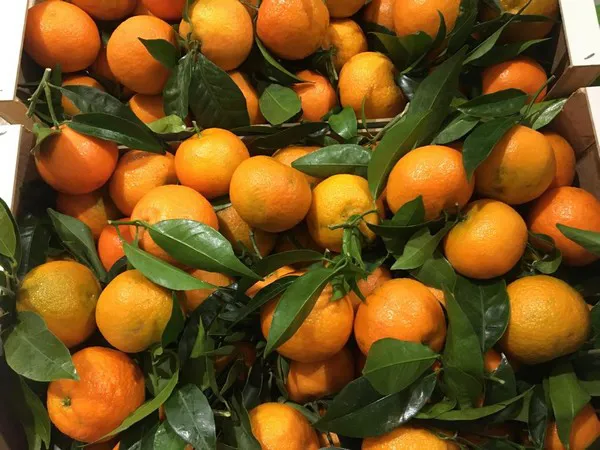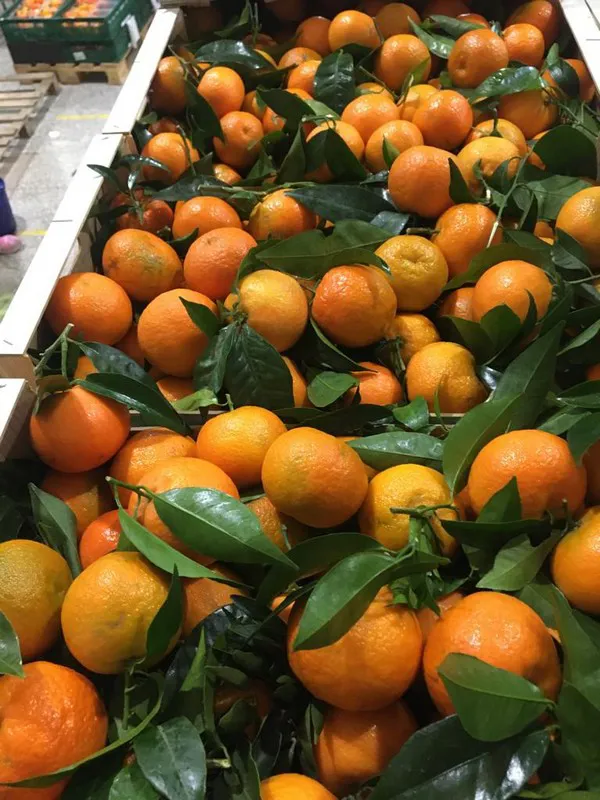In the southern Spanish region of Andalusia, Huelva is the province where most mandarins are grown. Its acreage and crop yields are three times greater than in the province of Seville, the second most important mandarin producer in Andalusia. Also, the difference between the area planted and that in production is so great that Huelva should expect its production to increase significantly in the coming years.
"On September 13, we started harvesting the first Clemenrubí and a week ago we harvested the last Oronules," says Alfonso Tomé, of Frescitrus. "It has been a very good season in terms of volume, despite the stormy weather at the end of September. Almost 120 liters of rainfall per square meter were recorded in our region in just one hour, with hail also at some points. The municipalities of Isla Cristina, Cartaya and Lepe were hit particularly hard and there the low clementine plots were flooded when the harvest had just started. Nevertheless, we were able to harvest 25-30% more fruit than initially expected. Of these early varieties, which account for one of our two production peaks, we harvested 9 million kilos."
"The other peak will be reached with the late clementines, whose season starts in January with the Clemenvilla, followed by the Tango, Nadorcott and Orri. At the end of March/beginning of April we will close the season with the Murcott. In Huelva, we grow the entire range of mandarins."

The clementines from Huelva hit the market in September, when there is also fruit from South Africa. Then in early November there is overlap with the harvest from the Region of Valencia, but less fruit has been harvested there this year. The Valencian Council of Agriculture estimates the drop at 18% for mandarins and at 27.7% for clementines.
"Normally, we stop with our early clementines as soon as the Valencian Clemenules arrive on the market, as the demand for the Oronules then drops and prices also go down, but this year we did not feel that pressure due to the lower supply of Valencian fruit. So we were able to extend our season well into November."
"At the beginning of our season, however, there was still a lot of South African fruit on the European market, especially club mandarins of the Nadorcott, Orri or Tango varieties. We could hardly compete with our early clementines against those, anyway. But in general we have had quality clementines with the right sizes, so we have seen good prices from the beginning. Also, we have chosen to offer clementines with leaf to differentiate ourselves from South Africa. After all, citrus with leaf symbolizes freshness," says Alfonso. "Of the 9 million kilos we sold, almost 70% were clementines with leaf."
"Fruit that has been in storage for 30 days does not have the same quality as a product that has ripened on the tree and has thus reached its beautiful color and correct Brix degree. The fresh, green leaves indicate that the fruit has been picked only 2 or 3 days before it hitting the store shelves."

"All the markets, both in Spain and abroad, are responding very positively to the fruit with leaf," says Alfonso. "But we have to keep explaining to consumers exactly what it means. Only then can it be truly appreciated. The grower is taking a risk by leaving the fruit on the tree until it acquires a nice color naturally, because if it suddenly started raining heavily, the harvest could be lost. The market should not only appreciate this, but also show it through prices. Moreover, the taste of the fruit that ripens naturally is much better than that of fruit that has gone through the ripening process in a storage room," says the manager of Frescitrus.
Fruit with added value
The freshness guaranteed by the leaf has proven to be an added value in the current clementine season for this company from Huelva, which was founded in 1998. But the company has another asset. "Currently, several plots are in the process of being certified organic and integrated crop protection strategies are already fully established in our fields. Releasing beneficial insects works much better for us than using chemicals," says Alfonso Tomé. "We are also members of several clubs. For example, we grow Nadorcott, Tango and Orri. Club varieties have higher production costs than royalty-free mandarins, but at the moment, growers are obtaining very interesting profit margins from them."
According to a cost study carried out by the Andalusian government for the 2019/20 season (before the sharp increase in costs last year), the average production cost, including the harvest, for free mandarin varieties was €8,555 per hectare, while for club varieties it was €13,462 per hectare.
"Morocco also grows club varieties, especially Nadorcott, and there the production costs are much lower than in Spain, since some elements, especially labor, are much cheaper there. In the future, that could certainly become a problem," warns Alfonso Tomé. "We will have to find a solution for that again, as we did with the mandarins with leaf."
Clementines from Huelva
Based on data from last season, Andalusian mandarin exports increased by 12% to more than 49,000 tons, out of which 93.7% corresponded to sales within the European Union. Huelva plays a decisive role in generating these figures, as 61% of Andalusian mandarins are picked in that province.
Given these large volumes, the geographical concentration, the quality of the fruit and its own marketing window within the Spanish season, one could expect a future differentiation of the mandarins and clementines from Huelva within the national citrus panorama. After all, such an initiative already exists for another Andalusian citrus variety, namely the Oranges of the Guadalquivir Valley.
"Currently there is no such project in the province, but for the early mandarins there are certainly opportunities in this sense. We are talking about high quality fruit that is always appreciated by the market, despite any existing competition," says Alfonso Tomé.
For more information: Alfonso Tomé
Alfonso Tomé
Frescitrus
Centro Tecnológico de la Agroindustria ADESVA
P.I. La Gravera, Avda. La Dehesa del Piorno, 1
21440 Lepe (Huelva) - Spain
Tel: +34 650 949 191
atome@frescitrus.com
www.frescitrus.com
